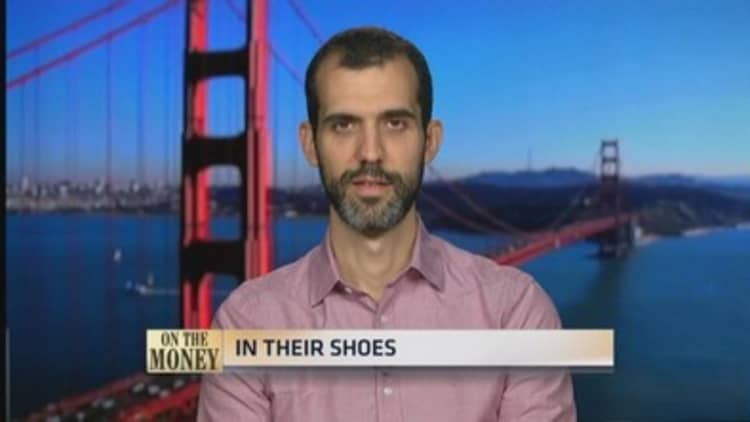
When it comes to paying better wages and keeping employees invested in the company, Zappos isn't waiting for the other shoe to drop.
The Amazon-owned online retail shop is already known as a game changer with a catchy management phrase it calls "holacracy."
That stands for replacing traditional job titles with the practice of employees assigning one another with roles agreed upon during meetings with their colleagues.
Now, the company is taking a new approach with work incentives. Zappos plans to ask employees to choose their hourly work schedule based on higher pay and perks offered. The retailer recently stepped into this space by testing a new compensation model for their call center employees.
Read MoreIn San Francisco, one condo comes with free rides
The model is called Open Market and is similar to Uber's surge pay that charges more during times of greater demand. Basically, Zappos plans to pay more on shifts with a higher number of callers.
"We wanted to start testing how we could give our call center employees more flexibility and be able to incentivize people to come to work when we needed them, even if the timing wasn't always ideal," said Adam Goldstein in an interview.
Goldstein is the senior products manager at Zappos Labs, the shoe seller's R&D group that focuses on experiments concentrated on social, content and commerce.
Along with his team, Goldstein developed the Open Market project in 10 weeks using a variety of algorithms and metrics, including historical data, call volume forecasts blended with seasonality assumptions, and rolled out a pilot test of the program during the retail industry's busiest time of year: between Thanksgiving and Cyber Monday.
Staying loyal
Based in Las Vegas, Zappos' primary selling base is shoes, which accounts for about 80 percent of its business. It has since expanded its inventory to include clothing, accessories and kids' merchandise, which account for 20 percent of the company's annual revenues.
By 2015, Zappos forecasts that clothing and accessories will bring in an incremental $1 billion worth of revenue and might eventually outpace shoes.
Goldstein says the heart and soul of Zappos is the customer loyalty team who answers on average 5,000 calls a month and 1,200 emails a week. Those numbers can easily spike, especially during holiday seasons.
Read MoreHoliday retail hiring falls below expectations
"Employees love it. Every week when they log in, we ask them how happy they are with their schedule," said Goldstein. "We've actually seen self-reported happiness go up 20 percent during the time we've been testing" the Open Market method, he said.
Open Market is flexible and allows employees to set their work schedules above 40 hours, with the ability to work even when shifts are overstaffed. However, in reverse to the concept of surge pay, overstaffed shifts pay less.
A perk of the compensation system is "20 percent time," an employee benefits program in which a fraction of overall hours worked can result in expendable time to work on other projects, or even take some leisure time.
While the online retailer admits to not having worked out all of the kinks, Goldstein argues that keeping employees happy is essential to the company. Open Market may be tested in other areas of the company, yet there is no date for launch in other departments, he said.
"Other teams have reached out to us because they want to be empowered to make decisions," Goldstein said, "which is why they chose to work at Zappos and why we hired them to build teams that work."



